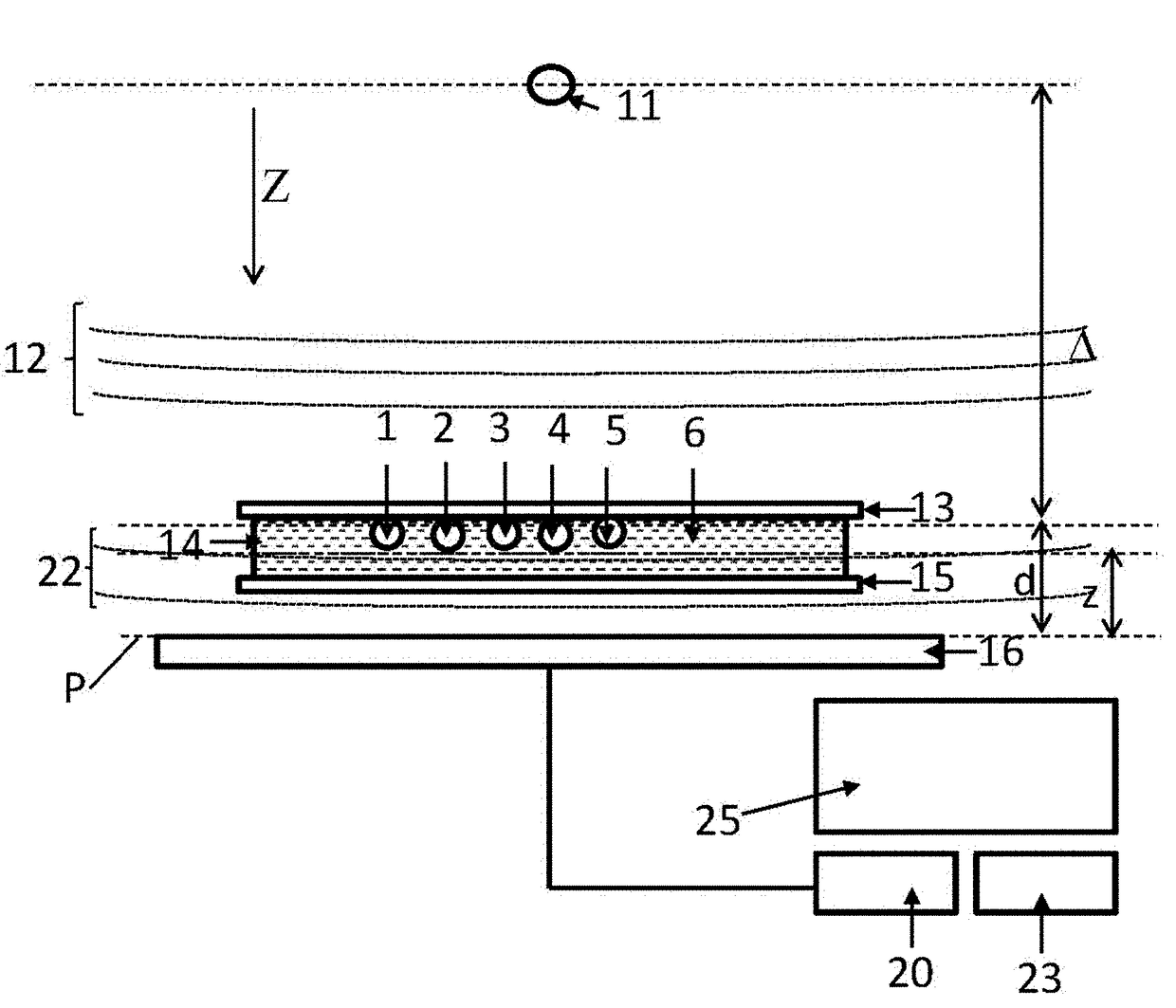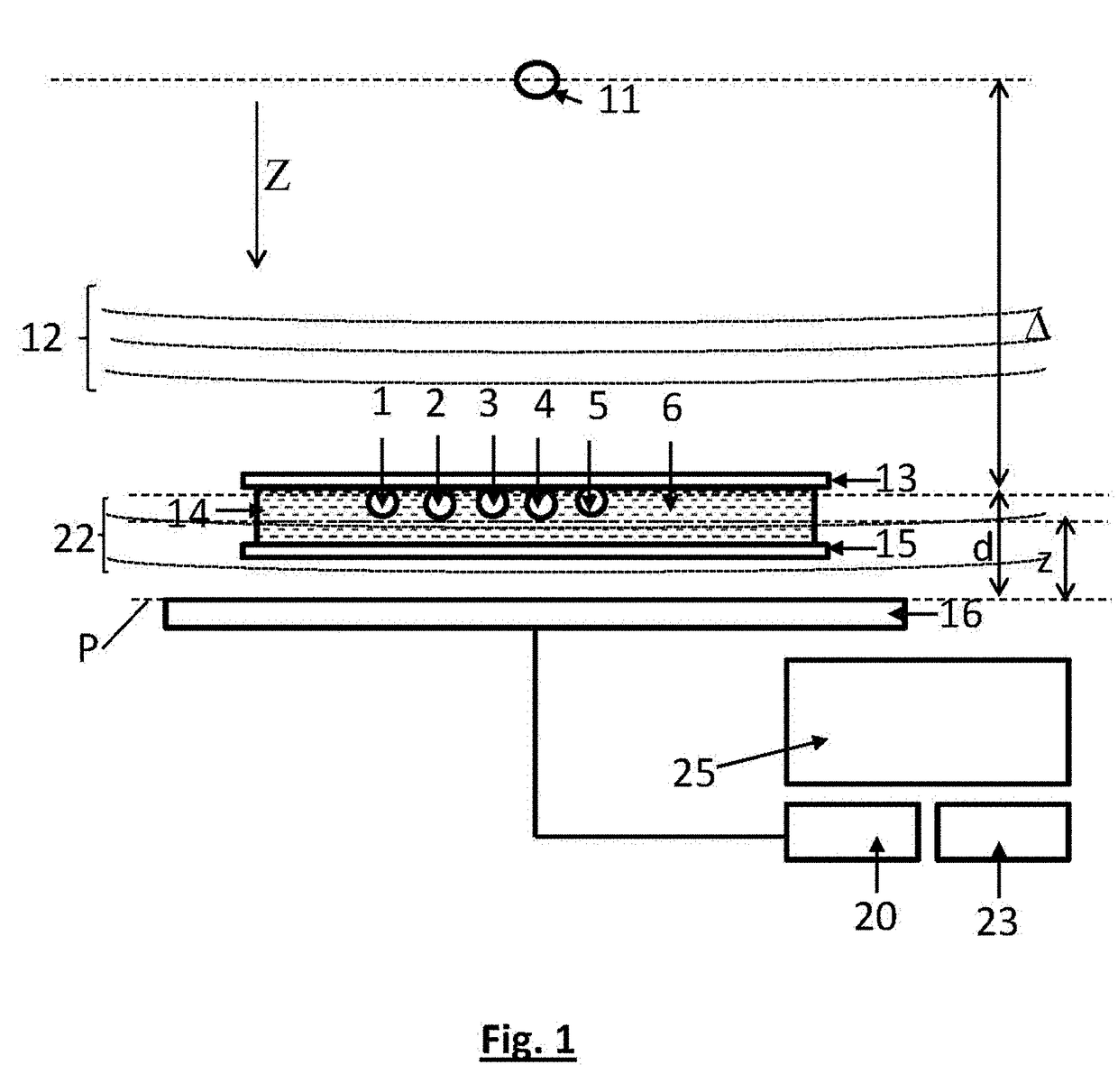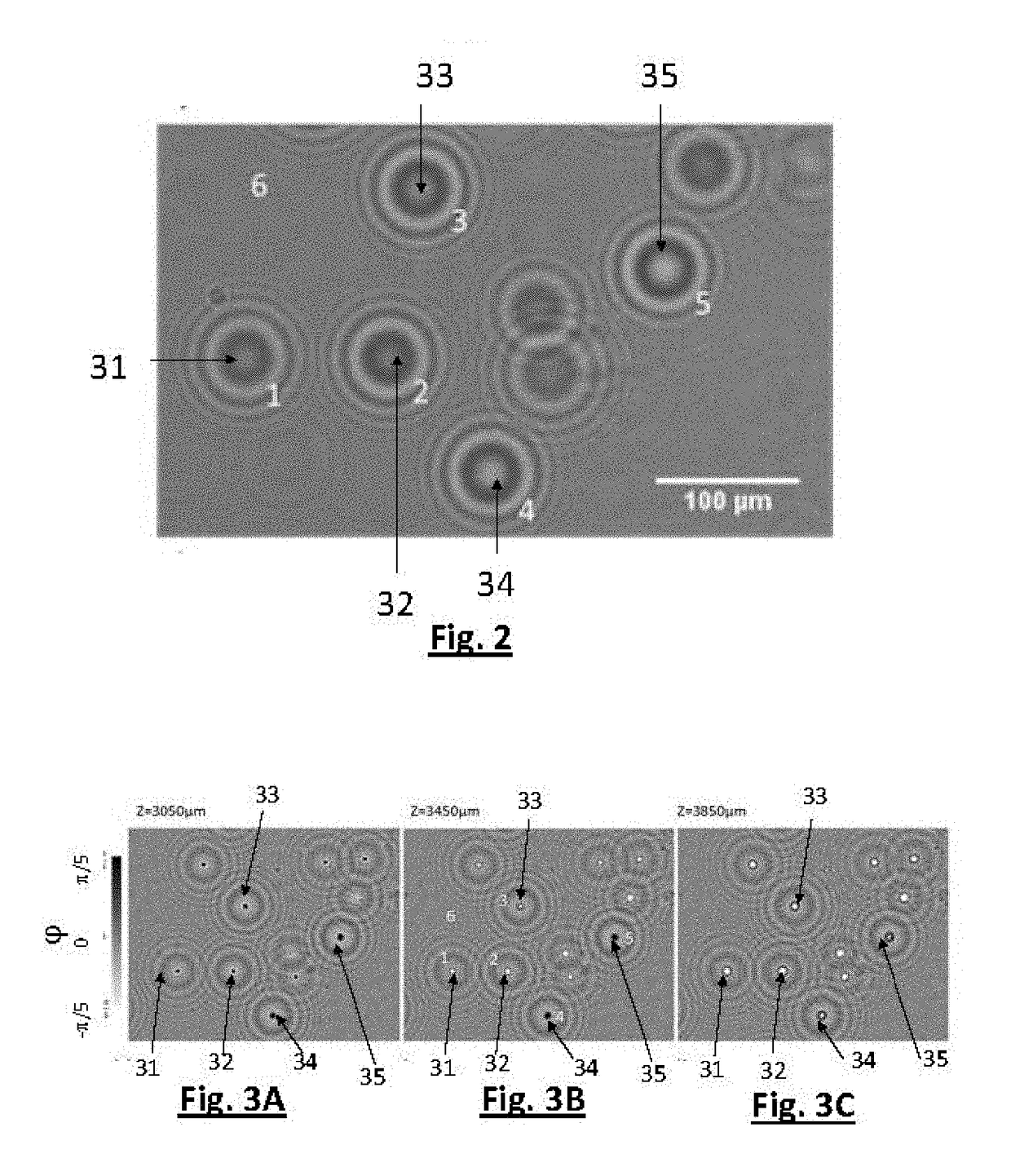Method for determining the state of a cell
a cell state and cell technology, applied in the field of cell analysis, can solve the problems of requiring the use of a microscope, affecting the development of cells, and requiring a large amount of equipment,
- Summary
- Abstract
- Description
- Claims
- Application Information
AI Technical Summary
Benefits of technology
Problems solved by technology
Method used
Image
Examples
Embodiment Construction
[0055]FIG. 1 shows an example of the device that is one subject of the invention. A light source 11 is able to produce a light wave 12, called the incident light wave, in the direction of a sample 14, along a propagation axis Z. The sample 14 includes a culture medium 6 and cells 1, 2, 3, 4, 5 the state of which it is desired to determine—it is in particular desired to determine whether they are alive or dead.
[0056]The distance Δ between the light source and the sample is preferably larger than 1 cm. It is preferably comprised between 2 and 10 cm and is typically 5 cm. Preferably, the light source, seen by the sample, may be considered to be point-like. This means that its diameter (or its diagonal) must be smaller than one fifth and better still one tenth of the distance between the sample and the light source. Thus, the light reaches the sample in the form of plane waves, or waves that may be considered as such.
[0057]The light source 11 may be a point source, or be associated with...
PUM
| Property | Measurement | Unit |
|---|---|---|
| distance | aaaaa | aaaaa |
| distance | aaaaa | aaaaa |
| distance | aaaaa | aaaaa |
Abstract
Description
Claims
Application Information
 Login to View More
Login to View More - R&D
- Intellectual Property
- Life Sciences
- Materials
- Tech Scout
- Unparalleled Data Quality
- Higher Quality Content
- 60% Fewer Hallucinations
Browse by: Latest US Patents, China's latest patents, Technical Efficacy Thesaurus, Application Domain, Technology Topic, Popular Technical Reports.
© 2025 PatSnap. All rights reserved.Legal|Privacy policy|Modern Slavery Act Transparency Statement|Sitemap|About US| Contact US: help@patsnap.com



